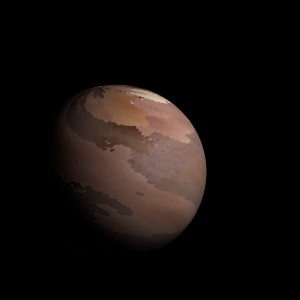|
|
Space Astro
|
Info for exoplanet "Rabujomo"
| Scientific (actual) data |
|---|
| Name | TOI-4155 b |
| Planet status | Confirmed |
| Radius | 0.2864 |
| Orbital period | 3.32073 |
| Inclination | 88.84 |
| Discovered | 2025 |
| Updated | 2025-08-06 |
| Tzero tr | 2459800 |
| Impact parameter | 0.2 |
| Temperature (kelvin) | 1255 |
| Publication | Published in a refereed paper |
| Detection type | Primary Transit |
| Radius measurement type | Primary Transit |
| Star name | TOI-4155 |
| Right ascension | 325.64° |
| Declination | 77.73° |
| Mag i | 11.85 |
| Star distance | 239.65 |
| Star metallicity | 0.11 |
| Star mass | 0.95 |
| Star radius | 1.16 |
| Star sp type | G3V |
| Star temperature | 5724 |
| Wikipedia article | TOI-4155 b |
Back
| |
| Fictional info (?) |
|---|
| Suggested name | Rabujomo |
| Planet type | Cold planet |
| It has the longest rotation period (445 days) of any planet in its solar system and rotates in the opposite direction to most other planets.
It is a cold planet planet with a mass one-thousandth that of TOI-4155, but two-and-a-half times that of all the other planets in its solar system combined.
The polar regions are constantly below 90°K (-183°C).
It was the one of the first exoplanets visited by a spacecraft, and one of the first to be successfully landed on.
Because of its rapid rotation, the planet's shape is that of an oblate spheroid (it has a slight but noticeable bulge around the equator). |
| Atmosphere | Hydrogen | 51% |
| Helium | 47% |
| 2H2O | 0.76% |
| Atmospheric pressure | 40 bar |
 |
| No known satellites |
| Google search for Rabujomo |
|
Website by Joachim Michaelis
|
|
|
|